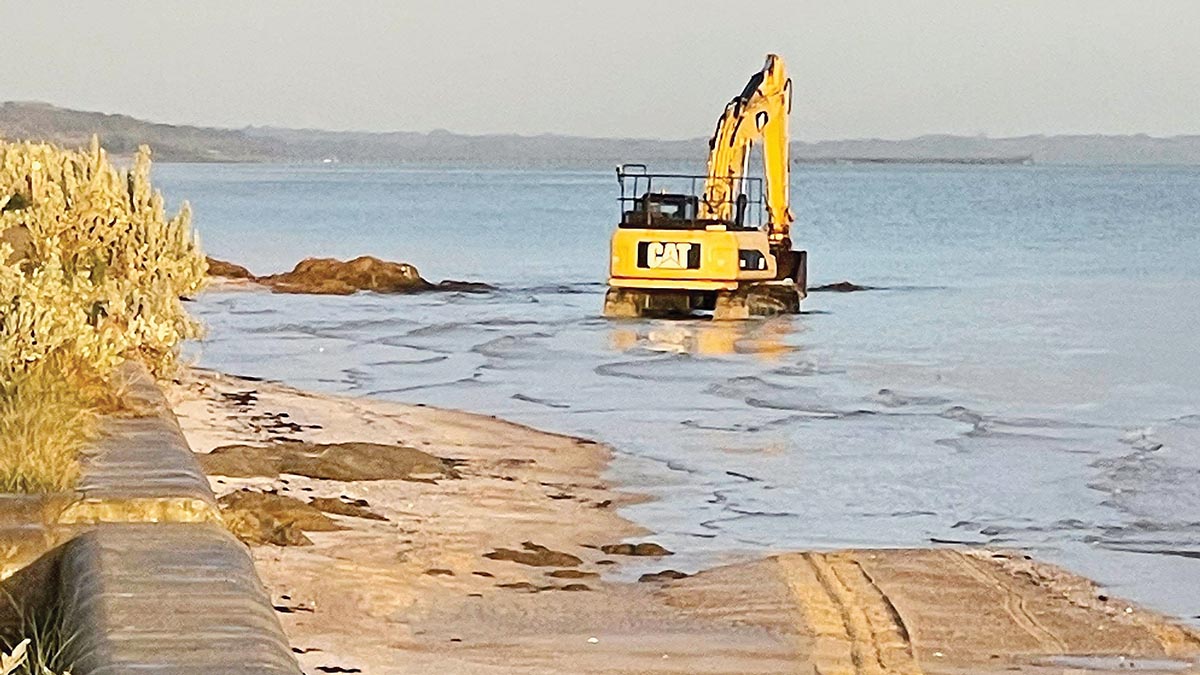ENVIRONMENTAL activist Josie Jones, of Rye, got into more than the spirit of things when she removed 5738 northern Pacific starfish from off McCrae beach last week.
“It was a great feeling to remove the pests from Port Phillip,” Ms Jones said after the clean-up, Sunday 23 May.
“I worked out that it was nearly a wheelie bin-full and I needed someone to help me push my bin to the kerb.”
The northern Pacific seastar (Asterias amurensis) is described at marinepests.gov.au as a large, aggressive predator of native species, including oysters, mussels and scallops.
Ms Jones believes the starfish are moving south towards Rosebud, Rye, Blairgowrie, Sorrento and Portsea.
However, she asks that they only be removed if they have been accurately identified.
“If you remove them, put them into general waste bins, wear gloves and report your collection to Parks Victoria or the Department of Environment, Land, Water and Planning.”
There are concerns dredging by DELWP of 20,000 cubic metres of sand to replenish McCrae beach may be contributing to the starfishes’ proliferation.
DELWP said the works were designed “to avoid impacting any marine values and coastal vegetation” (“Denial over ‘threat’ to marine life” The News 19/4/21).
“Our marine biodiversity and natural environment team experts have confirmed there are no specific concerns relating to the project with regards to land-based coastal vegetation, the reef, or the plants and animals that inhabit it,” Port Phillip regional director Stephen Chapple said.
Long-time beach users reported that marine creatures were being “shredded” by the dredging machines. Ms Jones said rather than harming the starfish this may help them regenerate and proliferate and disseminate thousands of eggs.
“Dredging has been linked to the redistribution of the starfish in the past,” she said. “I suspect the McCrae outbreak came from the dredge.
First published in the Southern Peninsula News – 1 June 2021




